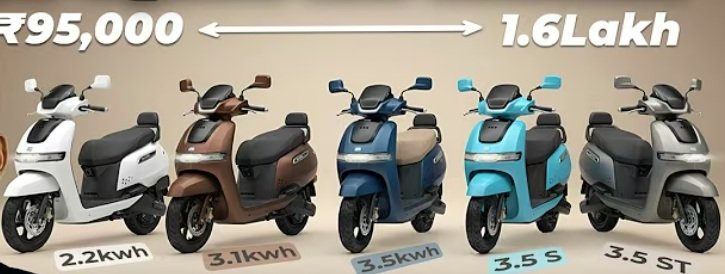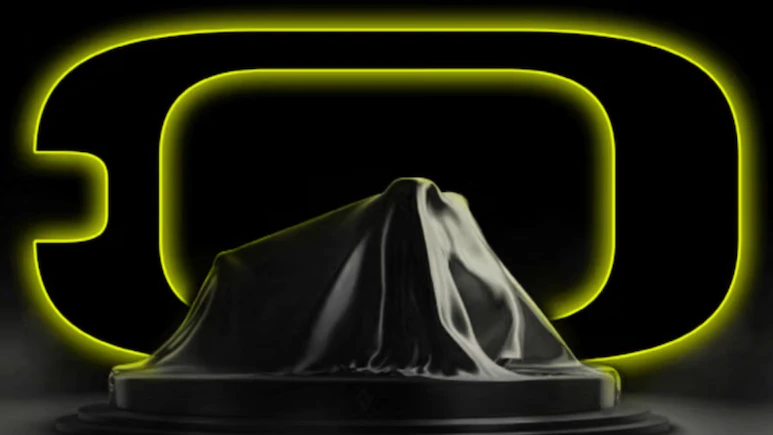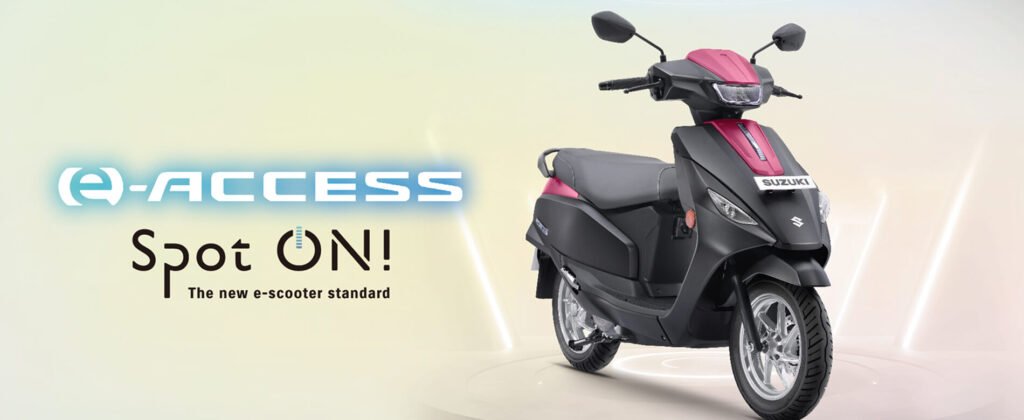TVS Motor Company has solidified its dominance in India’s electric scooter market, holding the number one spot in sales for the past six months. With the iQube lineup leading the charge, it’s no surprise that prospective buyers often face a dilemma: which variant is right for them? From budget-friendly commuters to long-haul delivery beasts, the iQube offers a spectrum of options tailored to different needs. In this comprehensive breakdown, we’ll start with the common threads that tie the entire family together, then dive into each variant—from the entry-level to the top-spec model. We’ll cover pricing (ex-showroom in Bangalore, with on-road estimates), battery sizes, real-world ranges, extra features, and who each one suits best. By the end, you’ll have the clarity to pick the value-for-money champ that matches your daily grind.
Across all variants, the TVS iQube delivers a consistent core experience, making it a reliable choice for urban riders. Powered by a 4.4 kW peak power BLDC hub-mounted motor (3 kW rated), it churns out 140 Nm peak torque for snappy acceleration—hitting 0-40 km/h in about 4.2 seconds in most models (slightly slower in the heaviest). Top speeds hover around 75-82 km/h, with riding modes including Eco and Power, plus handy Reverse and Forward Parking Assist for tight spots.
Safety and ride quality are non-negotiables: Front disc brake (220 mm), rear drum (130 mm), 157 mm ground clearance, telescopic front suspension, and hydraulic twin-tube rear coil spring shocks (adjustable in higher trims). The tubeless 90/90-12 tires on a 1,301 mm wheelbase keep things stable, while the IP67-rated lithium-ion battery ensures dust and water resistance, backed by regenerative braking.
Tech perks are standard too: Turn-by-turn navigation via the SmartXonnect app, call and SMS alerts, distance-to-empty indicator, USB mobile charging, anti-theft alerts, and crash/fall detection. Bluetooth and OTA updates (for telematics, MCU, VCU, and BMS) keep things future-proof. Design-wise, all share the same sleek, modern scooter silhouette with LED lighting, a 770 mm seat height, and ergonomic ergonomics.
The real differences? Battery capacity dictating range and charging times, plus escalating features like larger displays, faster chargers, and premium add-ons. Prices start low thanks to incentives like the PM E-Drive scheme, but vary by state—our figures are Bangalore ex-showroom (effective after discounts), with on-road adding roughly ₹5,000-₹10,000 for RTO and insurance.
Starting Small: iQube 2.2 kWh – The Everyday Essential
Kicking off at ₹1,07,608 ex-showroom in Bangalore (on-road around ₹1,09,942), this base model is the gateway to electric mobility. It packs a 2.2 kWh battery (certified 2 kWh), delivering an IDC range of 94 km—real-world about 65-70 km for a single rider in mixed conditions. Top speed caps at 75 km/h, and it sips power via a 650 W portable charger, reaching 0-80% in 2 hours 45 minutes.
The 5-inch (12.7 cm) TFT display handles essentials with 800×480 resolution and auto day/night mode, but skips joystick controls. Boot space is a practical 30 liters (no backrest), and you’re limited to three color options. Unique to this trim? It’s the lightest at 110 kg, ideal for nimble city hops.
Who it’s for: Budget-conscious riders with daily runs under 40-50 km—like office commutes, school drops, or quick errands. If your wallet’s tight but you want EV perks without compromise, this is your entry ticket.
Step Up in Stamina: iQube 3.1 kWh – Balanced and Feature-Packed
For just ₹10,000 more at ₹1,17,608 ex-showroom (on-road ~₹1,18,216), the 3.1 kWh variant (certified 2.7 kWh) boosts range to 123 km IDC (real-world 85-90 km single rider). Top speed jumps to 82 km/h, with the same zippy 4.2-second 0-40 sprint. Charging stretches to 4 hours 3 minutes on the standard 650 W unit, but a standout exclusive is Hill Hold Assist—perfect for inclines without rolling back.
Upgrades include a 32-liter boot with backrest for pillion comfort, four dual-tone color choices (though the plastic footboard accents can be tricky to maintain), and the same 5-inch display. Weight creeps to 116.8 kg, but it’s barely noticeable.
Who it’s for: Folks clocking 50-70 km daily without heavy loads. It’s a sweet spot for moderate users who want more juice without breaking the bank.
Range King on a Budget: iQube 3.5 kWh – Extended Horizons
At ₹1,25,608 ex-showroom (on-road ~₹1,32,013), this steps up to a 3.5 kWh battery (certified 3.2 kWh) for 145 km IDC range (real 105-110 km). Top speed is listed at 78 km/h on paper but hits 82 km/h in practice, with unchanged acceleration. Charging takes 4 hours 40 minutes via 650 W—still home-friendly.
Five color options add flair, and specs mirror the 3.1 kWh otherwise: 5-inch display, 32 L boot with backrest, 119.1 kg weight. No major feature leaps here; it’s all about that extra battery for peace of mind.
Who it’s for: Riders needing 70-90 km daily or insisting on 100 km real range. Great for those pushing limits without splurging on premiums.
Quick-Charge Upgrade: iQube S 3.5 kWh – Efficiency Meets Convenience
Add ₹5,000 for ₹1,30,608 ex-showroom (on-road ~₹1,37,588), and you get the S trim with the same 3.5 kWh pack and ranges. The game-changer? A 950 W fast home charger slashing 0-80% to 3 hours. The display balloons to a 7-inch TFT with joystick navigation, plus Music Control via app for on-the-go tunes.Four colors, same boot and backrest, but now it’s tuned for heavier use—weight steady at 119 kg.Who it’s for: Busy bees with 70-90 km runs who charge once daily and crave speed. Delivery pros or multi-trip urbanites will love the quicker turnaround.
The Top Dog: iQube ST 5.3 kWh – Ultimate Endurance Machine
Crowning the lineup at ₹1,56,608 ex-showroom (on-road ~₹1,70,000), the ST variant wields a massive 5.3 kWh battery for a class-leading 212 km IDC range (real 150-160 km). Top speed holds at 82 km/h, but added heft (around 124 kg) nudges 0-40 to 4.5 seconds. The 950 W charger needs 6 hours 50 minutes for 0-80%, but that’s fine for overnight top-ups.
Premium touches shine: 7-inch touchscreen display, Tyre Pressure Monitoring System (TPMS), Geo-fencing for security, three matte color options, and full OTA including speedometer tweaks. Adjustable rear suspension adds versatility, with the 32 L boot and backrest standard.
Who it’s for: Long-distance adventurers or pro delivery riders tackling 100-140 km daily. If heavy usage and one charge per day are your reality, this beast delivers.
The TVS iQube lineup proves you don’t need to compromise on fun, features, or reliability to go electric—it’s scalable smarts in scooter form. For most users, the 3.1 kWh variant strikes the best value balance: solid range, exclusive Hill Hold, and affordability without fluff. Prices can fluctuate by state and incentives, so check locally.



